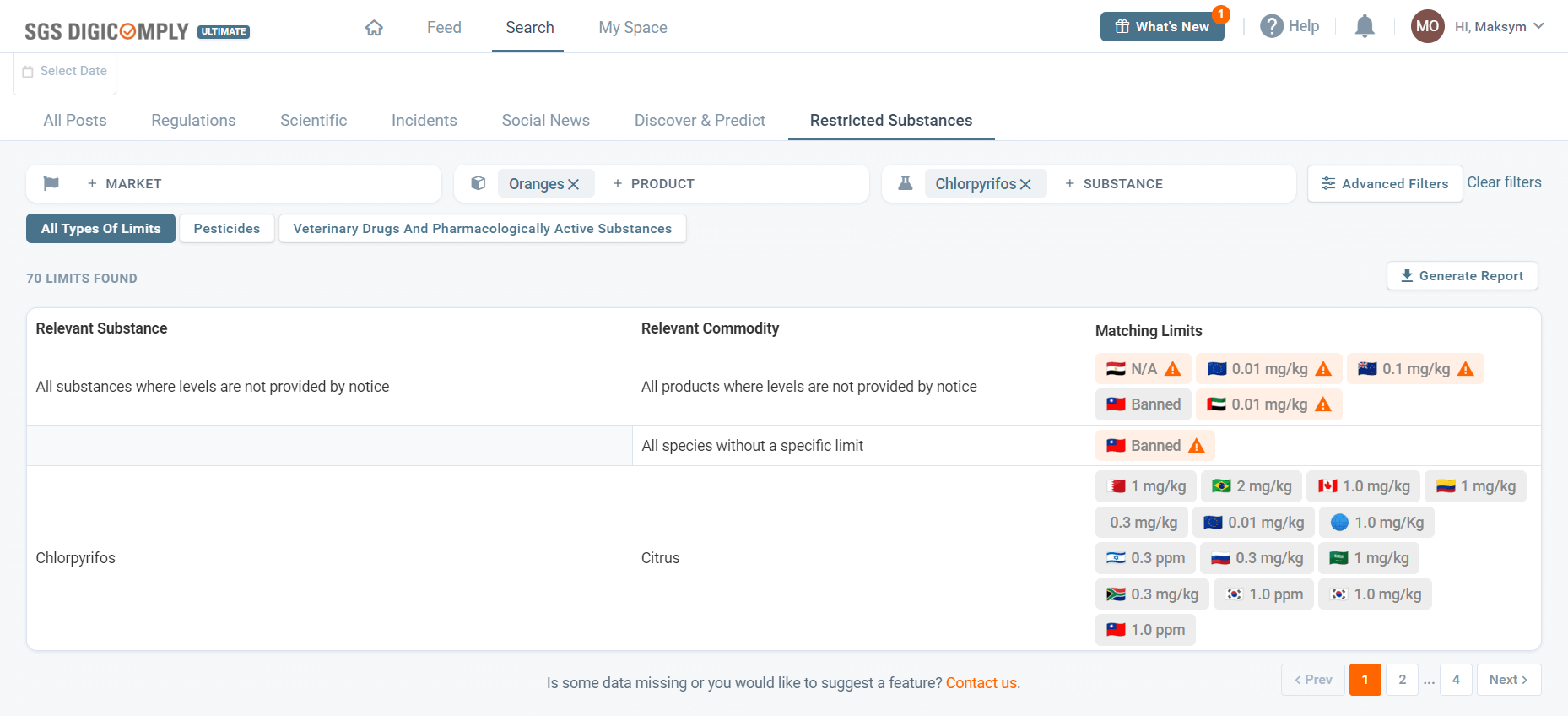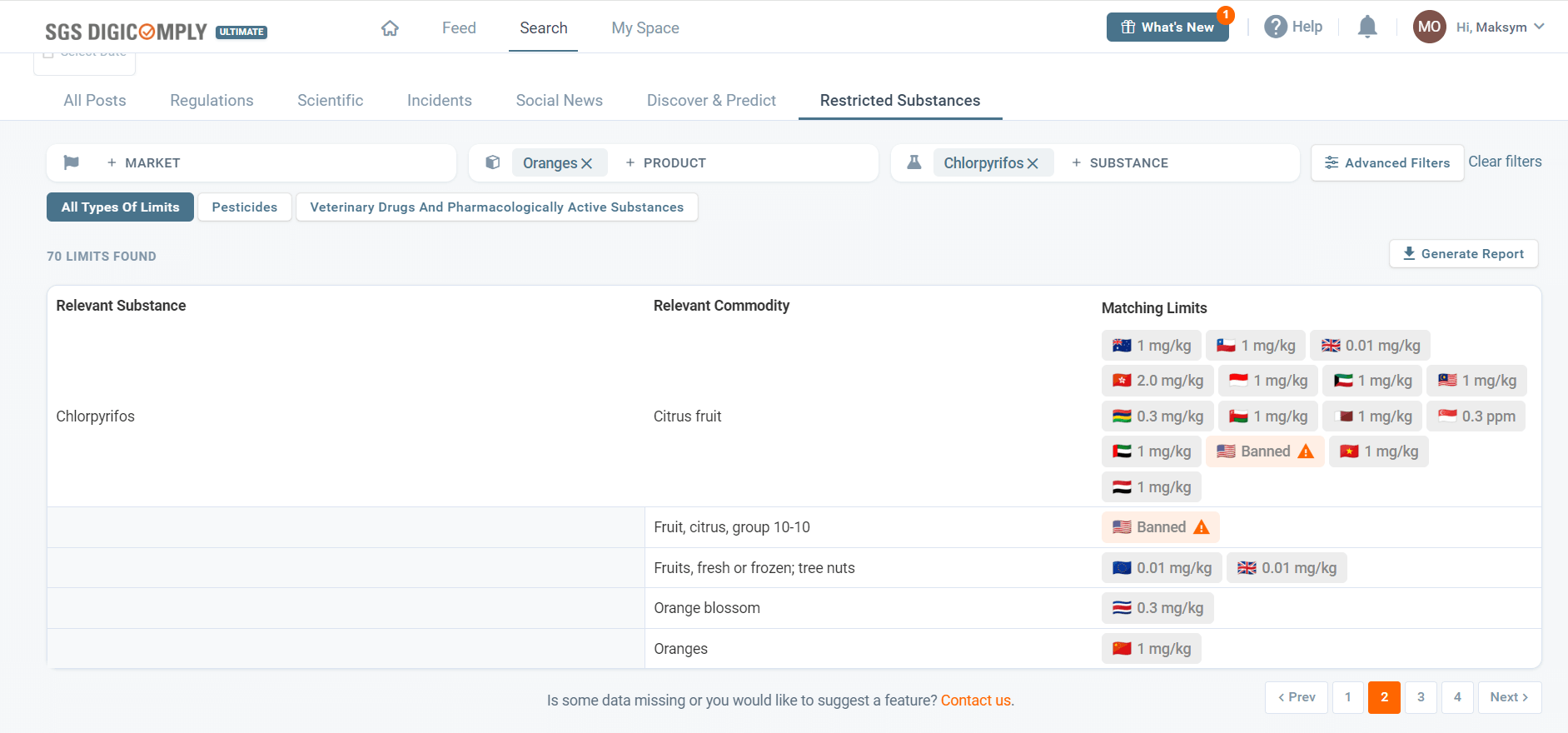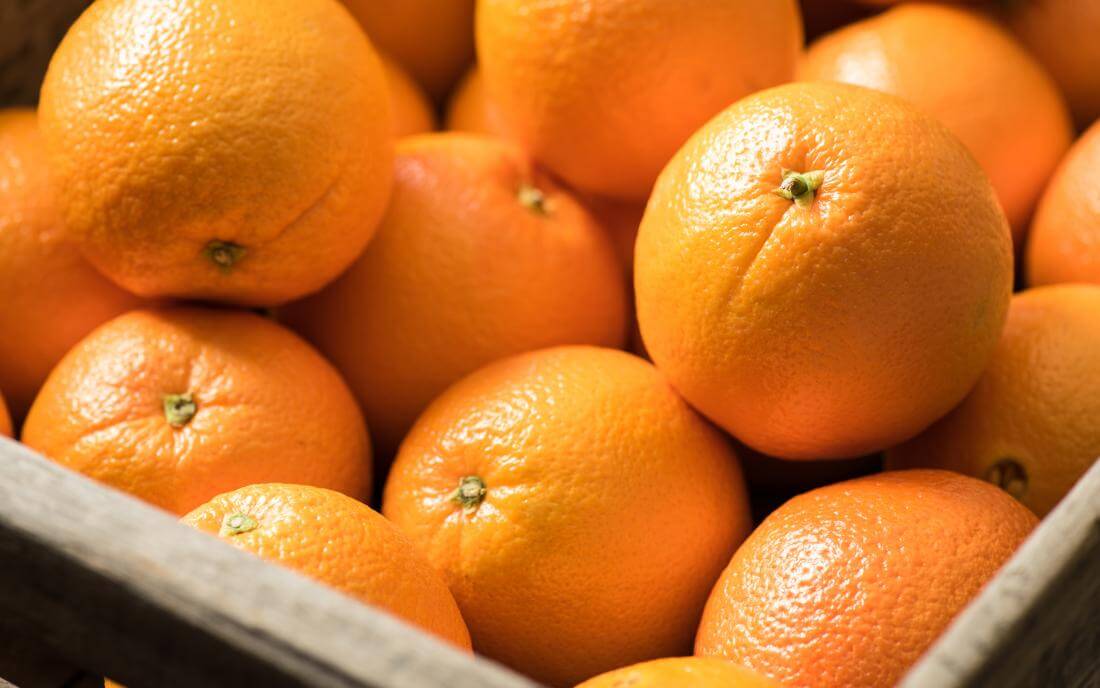Chlorpyrifos, a pesticide once commonly used in agriculture, faces varying degrees of regulation across the globe. This disparity reflects international concerns about its potential effects on human health and the environment. Utilizing data from SGS Digicomply's Global Ingredient Monitoring and Restricted Substances Database, this article presents a comprehensive examination of chlorpyrifos limits specifically in oranges, providing insights into the global regulatory environment.

Global Regulatory Landscape for Chlorpyrifos in Oranges
Bans and Strict Restrictions
- Taiwan and the United States of America have implemented outright bans on chlorpyrifos, indicating a stringent approach to mitigating potential risks associated with its use.
- The European Union and Great Britain have imposed very strict limits of 0.01 mg/kg for chlorpyrifos in all citrus fruits, including oranges. This low threshold underscores a significant concern for public health and environmental safety.
- New Zealand and the United Arab Emirates have set general restrictions for all substances, including chlorpyrifos, at 0.1 mg/kg and 0.01 mg/kg, respectively, for all products, demonstrating a proactive approach to chemical management in food products.
Regional Variations in Restrictions
- Countries like Brazil and Hong Kong have established higher tolerance levels at 2 mg/kg for chlorpyrifos in citrus fruits, suggesting varied risk assessments and regulatory philosophies.
- South Africa, the Russian Federation, Israel, and several other nations have set their limits at 0.3 mg/kg or ppm for chlorpyrifos in citrus, balancing between agricultural needs and health considerations.
Chlorpyrifos Methyl - An Additional Consideration
- The regulatory framework also extends to chlorpyrifos methyl, a related chemical, with several countries establishing specific limits. For instance, the European Union and Great Britain maintain their stringent limit of 0.01 mg/kg for chlorpyrifos methyl in citrus fruits, including oranges, aligning with their cautious stance on pesticide residues.
The Importance of SGS Digicomply for Compliance
Navigating the complex global regulatory landscape for pesticides like chlorpyrifos requires access to accurate and timely information. SGS Digicomply's Global Ingredient Monitoring and Restricted Substances Database serves as a critical resource for companies in the citrus industry, helping them ensure compliance with international standards and safeguard consumer health. This platform offers up-to-date information on global regulations, facilitating informed decision-making for producers, exporters, and regulators alike.

Feel free to get in touch now to learn about implementing the Global Ingredient Monitoring (Restricted Substances Database) for your company. Or explore the demo and try this tool in action.
Conclusion
The array of chlorpyrifos limits across different markets underscores the challenges faced by the citrus industry in adhering to international standards. These regulations reflect the balancing act between protecting public health and supporting agricultural productivity. As scientific understanding evolves and public health policies are updated, it's vital for stakeholders in the citrus sector to stay informed about current regulations. Leveraging tools such as SGS Digicomply can aid in navigating this complex regulatory environment, ensuring that the oranges reaching consumers' tables are both safe and compliant with global standards.





.webp?width=1644&height=1254&name=Food%20Safety%20Dashboard%201%20(1).webp)
